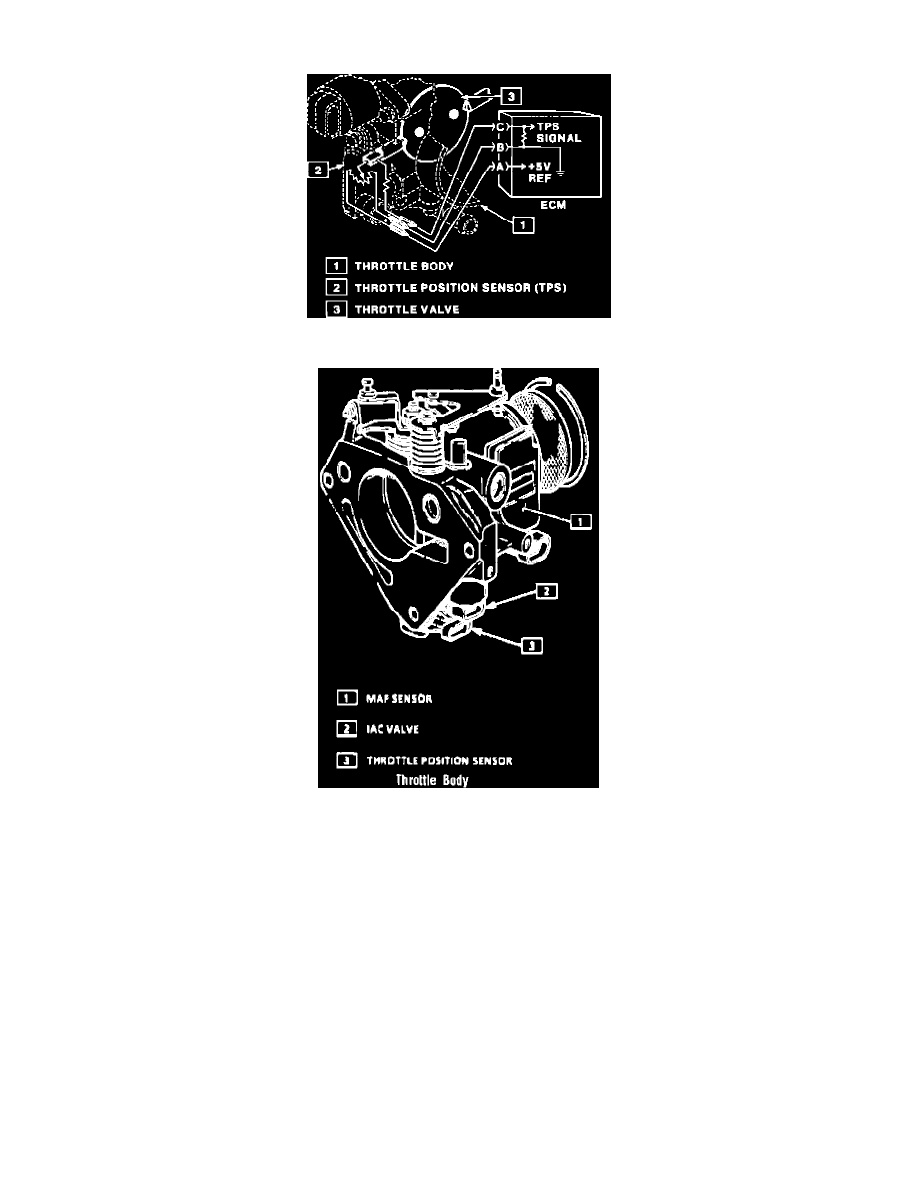Park Avenue V6-231 3.8L VIN L SFI (1993)

Throttle Position Sensor: Description and Operation
Throttle Position Sensor (TPS)
Throttle Body
DESCRIPTION
The throttle position sensor is mounted on the throttle body, and relates throttle position to the Engine Control Module. The ECM uses voltage values
from the throttle position sensor, compared with signals from the MAF sensor and ignition reference signals, to calculate engine speed and load for fuel
delivery and ignition timing control. Throttle position information is also important for determining when to output other functions such as acceleration
and deceleration modes, purging the vapor canister, idle speed control, and others.
OPERATION
The Throttle Position Sensor (TPS) is connected to the throttle valve shaft in the throttle body unit. The TPS is a potentiometer with one connection to
ground, and the other to the computer 5.0 volt reference source. A third wire from the computer is used to measure the output voltage from the TPS. As
the throttle angle changes, the TPS divides the current from the reference source between the signal wire and ground (pressing down on accelerator
pedal) varying the voltage in the signal wire. Each specific voltage value corresponds to a specific throttle angle. The computer monitors this voltage,
calculates the throttle valve angle, and uses this information, compared with information from other engine sensors, to determine engine load and
regulate fuel injection and other outputs.
